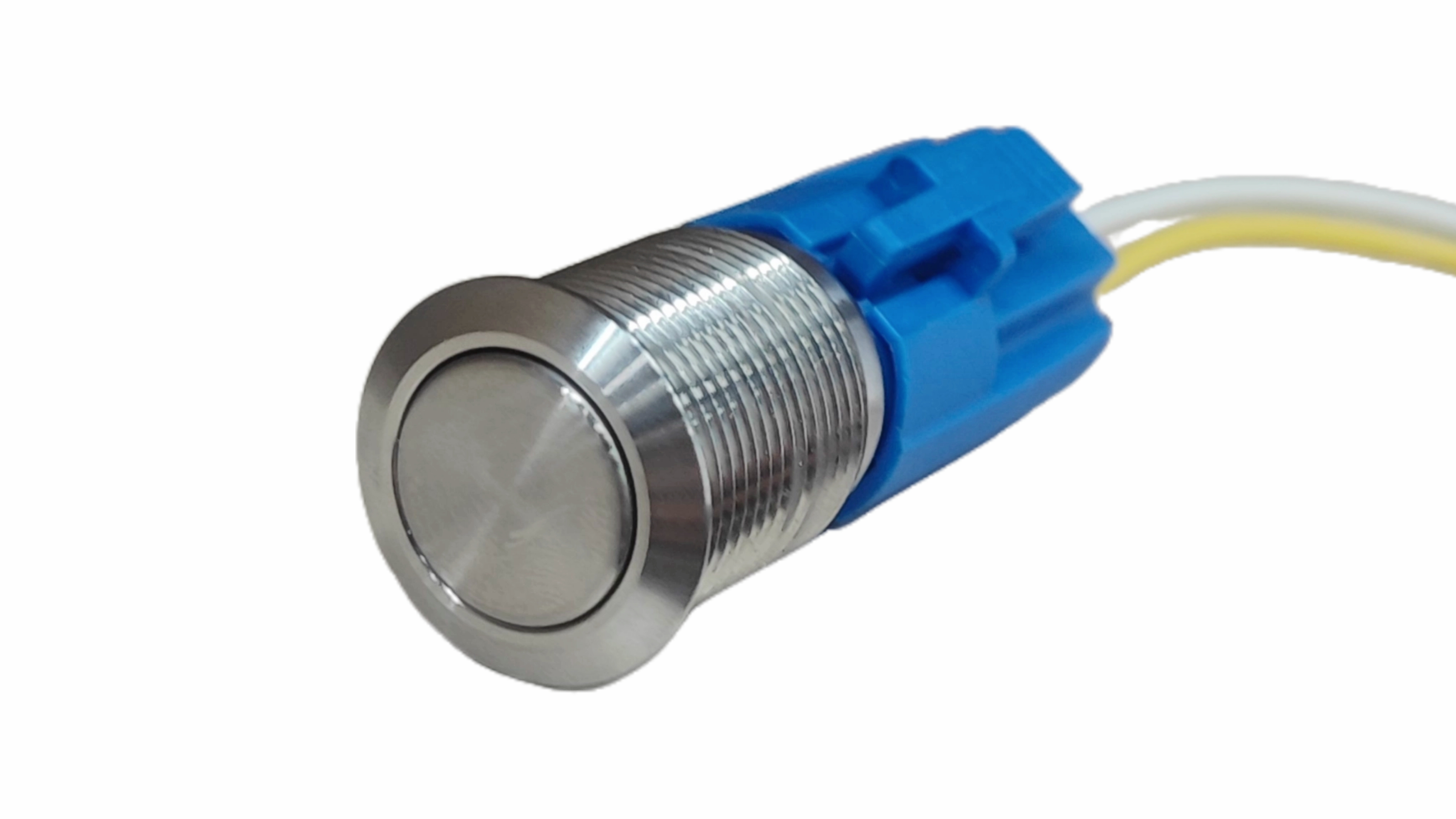16mm metal switches with quick connect terminals (Quick Connect Terminals) that have passed certifications (such as UL, TUV, CE) are relatively rare, mainly due to the following reasons:
1. Certification requirements impose strict standards on terminal connection reliability
Certification bodies (such as UL, TUV) have high requirements for terminal connection strength, conductivity, and durability. Although quick connect terminals are convenient for installation, they are more susceptible to vibration and repeated plugging/unplugging compared to soldered or screw terminals, which can lead to unstable contact. During certification testing, quick connect terminals may develop increased contact resistance or excessive temperature rise over long-term use, making it difficult to pass strict certification requirements.
2. 16mm metal switches are mainly used for low-voltage control, and market demand influences design
16mm metal push button switches are commonly used in low-voltage (such as 12V, 24V) signal control circuits, where high current capacity is not required.Soldered or screw terminals are sufficient for these applications. Quick connect terminals are more commonly found in high-current, high-power switches, such as those used in industrial equipment and household appliances (e.g., circuits above 30A), whereas 16mm metal switches typically have lower rated currents (such as 2A, 5A). Since there is limited market demand for quick connect terminals with certification, manufacturers do not typically design or apply for certification for such products.
3. Quick connect terminals pose design challenges for metal switches
The internal space of a 16mm metal switch is limited. If quick connect terminals are added, additional structural reinforcements are required to prevent terminal loosening or mechanical damage, which increases production complexity and cost. Metal push button switches usually adopt soldered terminals because this method provides a more secure connection and is less likely to be affected by plugging/unplugging forces.
4. High certification costs lead manufacturers to favor universal designs
Obtaining certifications (UL, TUV, CE) involves significant costs and stringent testing. If market demand is low, manufacturers are unlikely to invest in certifying quick connect terminal versions. The most commonly certified versions feature soldered or screw terminals, as they offer greater stability, durability, and easier compliance with certification standards.
